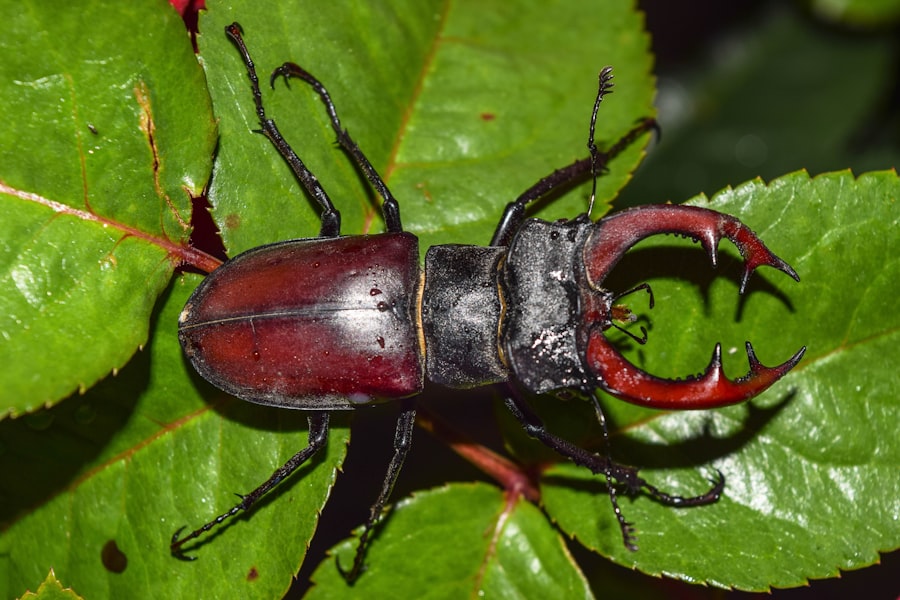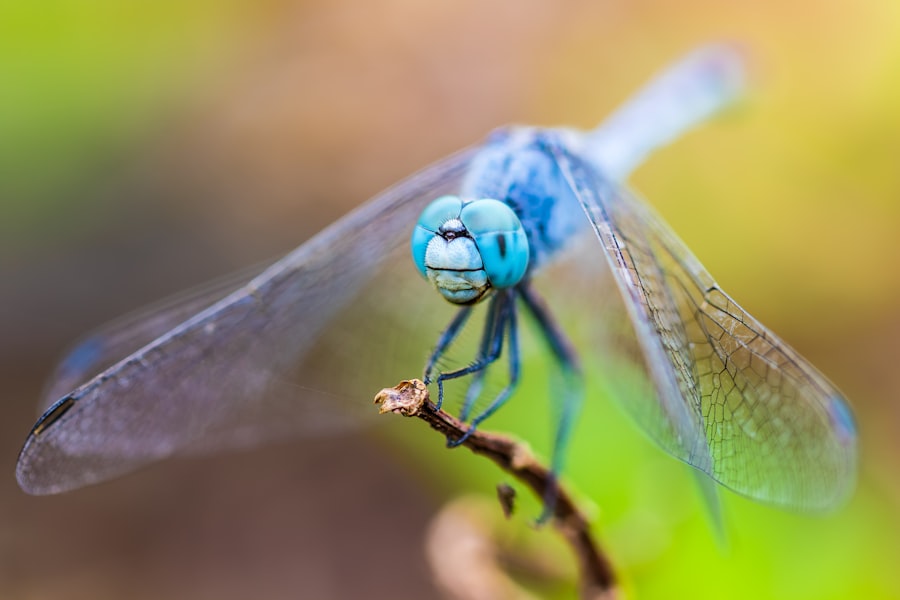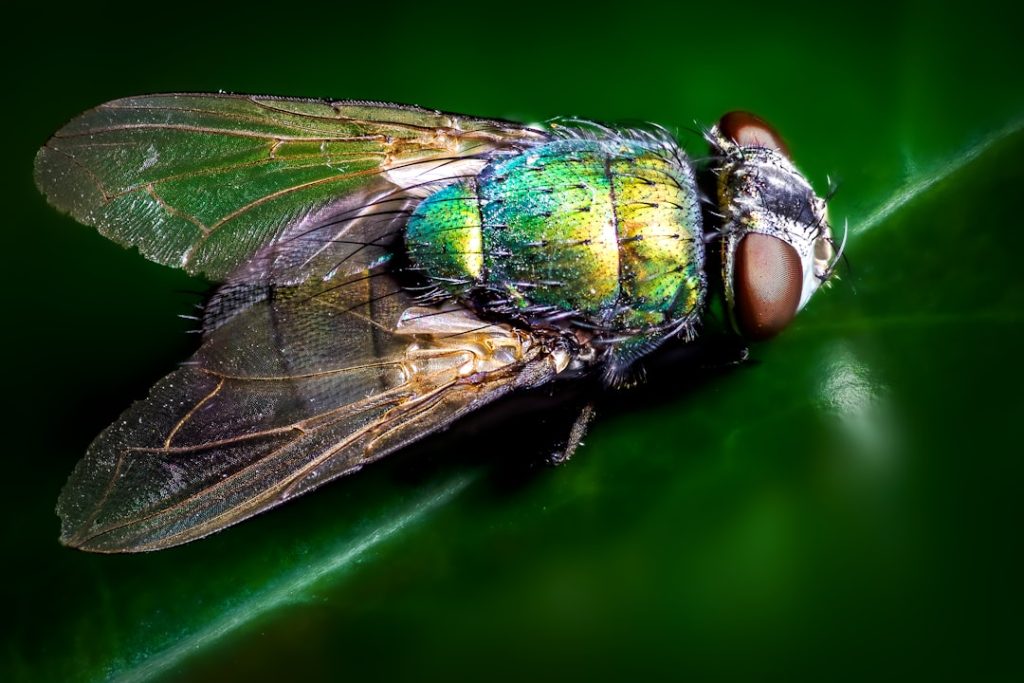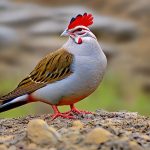Buffalo gnats, also known as black flies or turkey gnats, are small, blood-sucking insects prevalent in the United States. These insects are notorious for their painful bites and pose a nuisance to humans and animals, including chickens. Buffalo gnats are most active during spring and early summer, particularly near water bodies such as rivers and streams.
They are attracted to carbon dioxide, warmth, and moisture, which draws them to animals and humans. These gnats are primarily active during daylight hours, especially in the early morning and late afternoon, and tend to swarm in large numbers, making them a significant problem for chickens and other livestock. The impact of buffalo gnats on chickens can be substantial, causing irritation, discomfort, and stress.
Their bites may result in itching, swelling, and potential allergic reactions. Prolonged exposure to buffalo gnats can lead to anemia in chickens due to continuous blood loss, significantly affecting their overall health. Understanding the behavior and habits of buffalo gnats is essential for effective management and prevention of infestations.
By recognizing when and where buffalo gnats are most active, chicken owners can implement proactive measures to protect their flocks and create an environment free from these pests.
Table of Contents
Key Takeaways
- Buffalo gnats, also known as black flies, are small, blood-sucking insects that can cause irritation and discomfort to both humans and animals.
- To create a buffalo gnat-free environment, it is important to eliminate standing water, keep grass and vegetation trimmed, and use fans to disrupt their flight patterns.
- Natural repellents such as essential oils, herbs, and vinegar can be used to deter buffalo gnats from chickens and their surroundings.
- Maintaining clean coops and surroundings by regularly removing waste, keeping bedding dry, and using diatomaceous earth can help reduce buffalo gnat populations.
- Providing shelter and shade for chickens can help protect them from buffalo gnats, as these insects are most active during the day and in sunny areas.
- Utilizing protective clothing and gear such as mesh clothing, hats, and netting can help prevent buffalo gnat bites when working with chickens.
- If buffalo gnat infestations persist, seeking professional help from pest control experts or veterinarians may be necessary to ensure the health and well-being of the chickens.
Creating a Buffalo Gnat-Free Environment
Eliminate Standing Water and Moisture
One effective method to minimize the presence of buffalo gnats is to eliminate standing water around the coop and surrounding areas. Buffalo gnats are attracted to moisture, so regularly emptying and cleaning water containers, fixing any leaks or drainage issues, and ensuring proper ventilation to prevent excess moisture buildup can help reduce their presence.
Use Airflow to Deter Buffalo Gnats
Using fans or other airflow devices can help deter buffalo gnats, as they are not strong fliers and prefer calm, still air. This can be an effective way to keep them away from the coop and surrounding areas.
Maintain a Clean and Well-Kept Environment
Maintaining a clean and well-kept coop and surrounding areas is crucial in creating a buffalo gnat-free environment. Regularly removing any decaying organic matter, such as wet bedding or food scraps, can help reduce the attractiveness of the area to buffalo gnats. Keeping the coop and surrounding areas tidy and free of debris can also limit potential breeding sites for buffalo gnats, ultimately reducing their population.
Natural Repellents for Buffalo Gnats

In addition to creating a buffalo gnat-free environment, utilizing natural repellents can be an effective way to protect chickens from these pesky insects. One natural repellent that has been found to be effective against buffalo gnats is neem oil. Neem oil is derived from the seeds of the neem tree and has insecticidal properties that can repel and deter buffalo gnats.
Diluting neem oil with water and spraying it around the coop and surrounding areas can help create a barrier against buffalo gnats and reduce their presence. Another natural repellent that can be used to deter buffalo gnats is garlic. Garlic contains compounds that are known to repel insects, including buffalo gnats.
Crushing garlic cloves and mixing them with water to create a spray can be an effective way to keep buffalo gnats at bay. Spraying this garlic solution around the coop and on the chickens themselves can provide an added layer of protection against buffalo gnats. Additionally, planting garlic around the coop or incorporating it into the chickens’ diet can help repel buffalo gnats from the inside out.
Maintaining Clean Coops and Surroundings
Maintaining clean coops and surroundings is essential for preventing buffalo gnat infestations and providing a healthy environment for chickens. Regularly cleaning the coop by removing soiled bedding, droppings, and any decaying organic matter can help reduce the attractiveness of the area to buffalo gnats. Keeping feed and water containers clean and free of spills can also minimize the presence of these pesky insects.
Additionally, regularly mowing grass and trimming vegetation around the coop can help reduce potential breeding sites for buffalo gnats. Another important aspect of maintaining clean coops and surroundings is proper waste management. Ensuring that manure and other waste materials are properly disposed of or composted can help prevent buffalo gnat infestations.
Proper waste management not only reduces the attractiveness of the area to buffalo gnats but also promotes overall hygiene and cleanliness in the chicken coop. By implementing these practices, chicken owners can effectively manage buffalo gnat populations and create a more comfortable and healthy environment for their flock.
Providing Shelter and Shade for Chickens
Providing adequate shelter and shade for chickens is crucial for protecting them from buffalo gnats and other external threats. Buffalo gnats are most active during the day, especially in sunny and warm conditions, making shade an important factor in minimizing their presence. Ensuring that chickens have access to shaded areas, such as trees, shrubs, or covered structures, can help reduce their exposure to buffalo gnats.
Additionally, providing sheltered areas within the coop where chickens can seek refuge from buffalo gnats during peak activity times can further protect them from bites and irritation. In addition to shade, providing proper shelter for chickens can help minimize their exposure to buffalo gnats. Ensuring that coops are well-constructed with tight-fitting screens or mesh can prevent buffalo gnats from entering the living quarters of the chickens.
Sealing any gaps or openings in the coop can further reduce the likelihood of buffalo gnat infestations. By providing adequate shelter and shade for chickens, chicken owners can create a more comfortable and protected environment for their flock, ultimately minimizing the impact of buffalo gnats.
Utilizing Protective Clothing and Gear

Physical Barriers Against Buffalo Gnat Bites
Wearing protective clothing is an effective way to shield chickens from buffalo gnats. For chicken owners who spend time near their flock, wearing long-sleeved shirts, pants, and hats can provide a physical barrier against buffalo gnat bites. Additionally, wearing gloves and boots can further protect against these pesky insects.
Choosing the Right Clothing Colors
Wearing light-colored clothing can also help deter buffalo gnats, as they are attracted to dark colors. This simple yet effective approach can help reduce the risk of buffalo gnat bites.
Utilizing Protective Gear for Added Protection
In addition to protective clothing, utilizing gear such as mosquito nets or screens can provide an added layer of protection for chickens. Installing screens on coop windows and doors can prevent buffalo gnats from entering the living quarters of the chickens while still allowing for proper ventilation. Using mosquito nets or covers over outdoor enclosures or runs can also help create a barrier against buffalo gnats while still allowing chickens to enjoy time outside.
Seeking Professional Help if Necessary
In some cases, buffalo gnat infestations may require professional intervention to effectively manage and control their population. If preventative measures and natural repellents prove ineffective in reducing buffalo gnat numbers, seeking professional help from pest control experts or agricultural extension services may be necessary. These professionals have the knowledge and resources to assess the extent of the infestation and implement targeted control measures to reduce buffalo gnat populations.
Professional pest control services may utilize insecticides or other chemical treatments to effectively manage buffalo gnat infestations while minimizing potential risks to chickens and other animals. Agricultural extension services may also provide valuable guidance on integrated pest management strategies that focus on sustainable and environmentally friendly approaches to controlling buffalo gnats. By seeking professional help when necessary, chicken owners can effectively address buffalo gnat infestations and ensure the health and well-being of their flock.
In conclusion, understanding buffalo gnats and implementing proactive measures to create a buffalo gnat-free environment is essential for protecting chickens from these pesky insects. By maintaining clean coops and surroundings, providing shelter and shade for chickens, utilizing natural repellents, protective clothing, gear, and seeking professional help when necessary, chicken owners can effectively manage buffalo gnat populations and provide a healthy environment for their flock. With careful attention to these strategies, chicken owners can minimize the impact of buffalo gnats on their chickens and ensure their overall well-being.
If you’re looking for more tips on keeping your chickens safe and healthy, check out this article on chicken coop portage. It provides valuable information on how to properly move your chicken coop to ensure the safety and well-being of your flock.
FAQs
What are buffalo gnats?
Buffalo gnats, also known as black flies, are small flying insects that are known for their painful bites. They are commonly found near bodies of water and are most active during the spring and early summer months.
Why are buffalo gnats a problem for chickens?
Buffalo gnats can be a nuisance for chickens as they can cause irritation and discomfort with their bites. In severe cases, buffalo gnat bites can lead to blood loss and even death in chickens.
How can I keep buffalo gnats away from my chickens?
There are several methods to keep buffalo gnats away from chickens, including using insect repellents specifically designed for poultry, providing shaded areas for chickens to avoid direct exposure to buffalo gnats, and using fans to create airflow that can deter the insects.
Are there any natural remedies to keep buffalo gnats away from chickens?
Some natural remedies to keep buffalo gnats away from chickens include planting insect-repelling herbs such as lavender and mint near the chicken coop, using essential oils like citronella and eucalyptus as natural repellents, and providing dust baths with diatomaceous earth to help chickens repel insects.
What are the signs of buffalo gnat infestation in chickens?
Signs of buffalo gnat infestation in chickens may include restlessness, excessive scratching and pecking, skin irritation, and in severe cases, anemia and weakness. It’s important to monitor the chickens for any unusual behavior and signs of bites.
Meet Walter, the feathered-friend fanatic of Florida! Nestled in the sunshine state, Walter struts through life with his feathered companions, clucking his way to happiness. With a coop that’s fancier than a five-star hotel, he’s the Don Juan of the chicken world. When he’s not teaching his hens to do the cha-cha, you’ll find him in a heated debate with his prized rooster, Sir Clucks-a-Lot. Walter’s poultry passion is no yolk; he’s the sunny-side-up guy you never knew you needed in your flock of friends!







